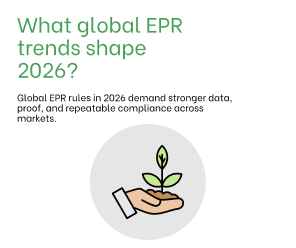Basic rules about EU VAT for e-commerce sellers
Basic rules about EU VAT for e-commerce sellers
If you’re an e-commerce seller and you’re confused about your VAT obligations in Europe, don’t worry. Here’s what you need to know about how VAT works in Europe, and how you can stay compliant with European VAT rules.
VAT in Europe – the basics
The European VAT rules apply to the 27 EU Member States. Each Member State sets its own VAT rate, and it varies between 17% and 27%.
EU Imports
The supplier doesn’t charge VAT to import into an EU Member State. You pay import VAT at the border before the goods can be released from customs, the rate depending on the Member State. Before you import goods or merchandise from a non-EU country, you need an Economic Operators Registration and Identification number (EORI number). You can apply for an EORI number as a business or an individual.
Sales within the EU
Free movement of goods rules apply to imports between Member States. Who pays VAT and when depends on whether you are VAT-registered.
VAT must be paid at the country of destination for your goods. In the case of selling B2C, you pay the VAT. If you sell B2B, your buyer pays it.
B2B
You can zero-rate VAT goods for export if your customer is based in an EU Member State and they have a valid VAT number. Be sure to retain the evidence of posting the goods.
The buyer charges local VAT at the destination country.
B2C
General rule: seller needs to charge VAT according customer location. You can determine customer location as a delivery address when you sell goods or as a billing address (IP address) when you sell digital services.
There are several exemptions from this rule:
(a) If you are the EU-business, you sell to consumers, and you don’t have a VAT number:
In case your sales are less than the intra-EU threshold (10K euro), and you don’t store goods outside of your domestic country, you can simply don’t charge VAT.
(b) If you are VAT registered EU business and sell to EU consumers below 10K threshold you can simply charge your local VAT rate. You cannot benefit from this threshold If you store your goods outside of your domestic country or dropship from other EU country.
If you are non-EU business and sell goods or services to customers in the EU without VAT number you need to register from the first supply. You cannot benefit from 10 K revenue threshold because it is applied to intra-EU sales only.
Distant selling thresholds
Put simply, if your annual sales are below thresholds set by individual Member States, there’s no need to register for VAT.
If you go over this threshold in the calendar year, you must obtain a VAT number. You still need to bear in mind the rules around storage mentioned above.
Sending goods to warehouses in other countries
You can transfer your goods from one EU country to another EU country. When you send your goods to Amazon FBA warehouse, you need to invoice yourself as it would be your customer (see B2B section).
Here’s an example – you are in Italy and send your goods to the German Amazon warehouse. You issue an invoice from your Italian VAT number to your German VAT number with 0% Italian VAT. Your German VAT number will charge 19% German VAT and you can credit this sum in the German VAT return
The VAT rates
For e-commerce stores, marketplaces and e-commerce platforms such as Amazon can help you to determine the VAT for a particular transaction. For EU countries, you can check the VAT rate for your goods online before you send them. If you sell goods through your own e-commerce store, you can use our VAT rate API in your online shop to determine the applicable VAT.
Reporting requirements
There are several reporting options available to businesses:
- Periodical VAT returns: VAT-registered businesses must submit these returns monthly or quarterly
- Annual tax returns: Most countries have annual forms dictating that registered companies submit their tax returns once per year
- Sales list: Businesses only submit this if they sell goods B2B, or move goods, to another EU Member State
- Statistics report: You only submit this if your sales exceed the threshold
Failure to comply
Nowadays, the tax administration authorities receive information about tax payments from multiple sources, including banks, marketplaces, and delivery companies. If they discover that a company doesn’t properly pay their VAT, they can close the e-commerce store to ensure that it ceases trading. They can also impose fines and other financial penalties. These penalties can go up to as much as 40% of your sales value, depending on the individual Member State and the severity of the offence.



